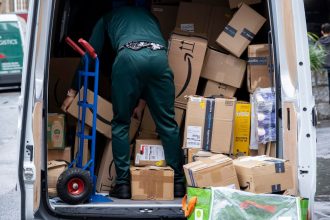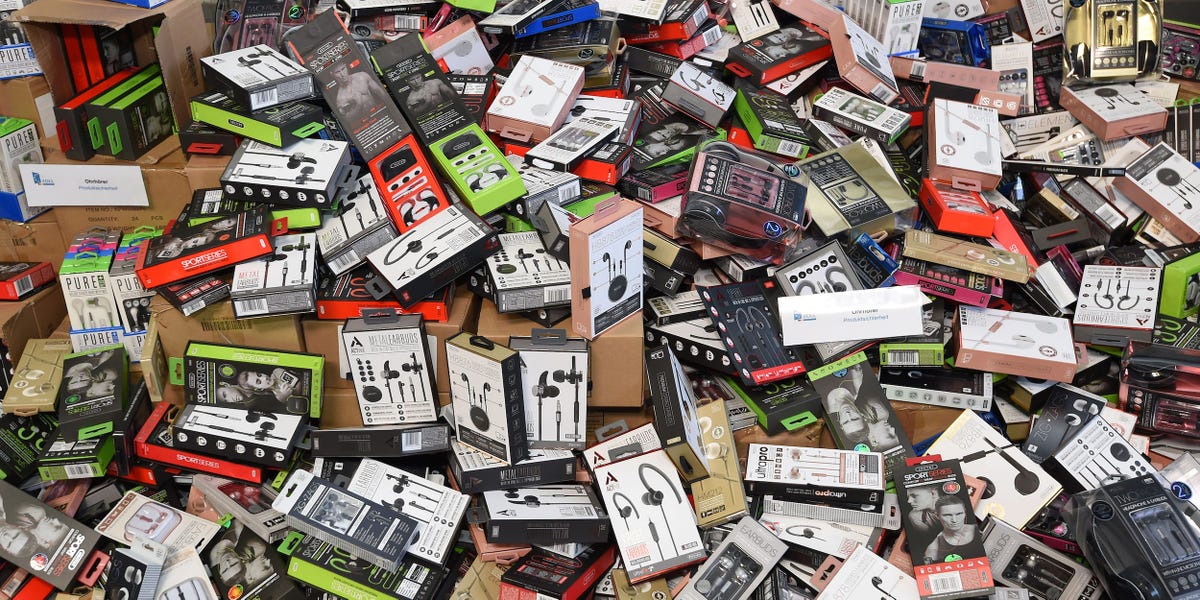- The counterfeit market is more sophisticated than ever before.
- New technology and the rise of online shopping has made it easier for scammers to sell fakes.
- These are the top tips to avoid buying a fake online.
Fake goods are everywhere: on well-known e-commerce sites, social media platforms, and even on websites that have been set up to mimic real brands.
“The problem is just so overrun,” Joe Simone, an IP protection specialist based in Hong Kong, told Insider, adding that counterfeiters attempt to sell fake versions of nearly everything today.
The rise of online shopping, particularly during the pandemic, fueled the market for counterfeit products.
It “really shook things up,” DK Lee, founder and chief brand officer of AI-powered IP and brand protection platform MarqVision, told Insider. “Having everyone at home for those long lockdowns, especially in a time when the world’s economy took such a hit, made an environment where counterfeiters could thrive,” he added.
At the same time, some brands shifted their focus — and dollars — away from policing copycat products because they were squeezed by the economic impact of the pandemic.
The Organisation for Economic Co-operation and Development, which is often cited by leading anti-counterfeiting organizations, has said fake goods make up for 3.3% of world trade or $509 billion. Other estimates say sales of these good total between $1.7 trillion and $4.5 trillion per year.
Counterfeit sellers are broadly targeting two types of shoppers: those who are knowingly buying a fake — a knockoff designer handbag, for example — and those who believe they are buying the real deal and being deceived.
Trade groups have fought for marketplaces like Amazon, eBay, and Walmart to become more stringent on verifying sellers. There has been some progress here: a recently enacted bill, The Inform Consumers Act, requires online marketplaces to disclose and verify the identity of their sellers.
Still, experts say that the burden is largely falling on brands to police fakes. “One brand has to enforce on 250 global platforms … people call it a game of whack-a-mole,” Jen Hanks, director of sustainability at the American Apparel & Footwear Association, told Insider.
Consumers can also help tackle the issue by learning how to spot fakes. Here are six tips from experts on what to watch out for when you’re shopping online:
1. If the price looks too good to be true, it probably is
One of the first things to check is the price of the product you’re purchasing, experts said.
“If you find something online at a 70% discount, and it’s not secondhand, that’s the first red flag you usually see,” Lee said.
It’s best to cross-check prices on authorized selling sites — that way you can see if the deal you’re getting is realistic.
2. Identify the seller and the product’s origin
If you’re shopping on a third-party marketplace, it’s a good idea to look at who’s selling the item and where it’s coming from.
Ben T. Smith IV, who leads the communications, media, and technology practice at management consultancy firm Kearney, said a good way to ensure you’re buying a legitimate product from Amazon, the largest online marketplace in the US, is by shopping on the “storefronts” for various brands. These sections of the site are used to highlight a specific brand that has a registered trademark and has been vetted by Amazon.
Sometimes the account name of the seller can provide some clues, as well.
“If you’re buying from XYZ_321 on eBay instead of a verified business account, you’re pretty much shopping on blind faith,” Lee said.
3. Dig deeper into the seller’s background
Experts say you should Google the seller’s name to see if they have an official website or any contact details.
A lack of online presence can be a red flag. It can also make it harder to return an item.
If there are no contact details on the listing, try Googling the words “scam,” “fake,” or “complaint” along with the business name to see if other customers have left reviews, Simone said. If there’s a number to call, try it, Bob Barchiesi, president of the International Anticounterfeiting Coalition (IACC), told Insider. If the number doesn’t work, then you can be pretty sure it’s a fake, he said.
Insider’s Hillary Hoffower previously reported that a “just launched” badge on a seller’s profile is also something to look for as scammers can often open multiple accounts and run these for a short period of time before being closed down.
4. Look out for fake reviews
Reviews can also help spot fakes. It’s easy to buy thousands of fake five-star ratings, but it’s a lot harder to fake a lot of written reviews, Lee said.
Look out for spelling errors, poor grammar, and similar wording across various reviews, Smith said. If a stream of positive reviews crop up within a few days of each other, it’s possible these aren’t genuine and a scammer is pushing to quickly boost their profile.
5. Review the quality of product images
Fake images can be harder to spot because it’s easy for sellers to use a brand’s official photos for the listing. AI is also making it possible to create realistic but fake custom images.
Still, if you do have suspicions, it’s a good idea to email the seller and ask for more photos of the product. If they won’t provide photos and don’t explain why, that could be another red flag.
6. Inspect the product packaging
Once the product arrives, check the packaging closely.
“Does the packaging look banged-up, old or sloppy? If you see any of these warning signs, the product very well could be fake,” the IACC warns online. Look out for misspellings on labels and check that the country it’s been shipped from matches where these items are usually produced.
7. Shop on sites that have friendly return policies
Experts said if you really want to avoid buying a fake, then buy from a brand’s own site or an authorized seller — somewhere like Best Buy, Macy’s, or Footlocker, for example.
And always check the return policies of shopping sites. Friendly return policies will make it easier to return a fake if you suspect you bought one, Simone said.
Read the full article here





